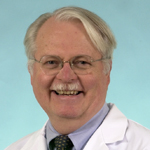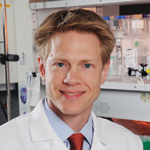
Scientists at Washington University School of Medicine in St. Louis have shown that taking a probiotic before radiation therapy can protect the intestine from damage — at least in mice.
The new study suggests that taking a probiotic also may help cancer patients avoid intestinal injury, a common problem in those receiving radiation therapy for abdominal cancers. The research is published online in the journal Gut.
Radiation therapy often is used to treat prostate, cervical, bladder, endometrial and other abdominal cancers. But the therapy can kill both cancer cells and healthy ones, leading to severe bouts of diarrhea if the lining of the intestine gets damaged.
“For many patients, this means radiation therapy must be discontinued, or the radiation dose reduced, while the intestine heals,” says senior investigator William F. Stenson, MD, the Dr. Nicholas V. Costrini Professor in Gastroenterology & Inflammatory Bowel Disease at Washington University. “Probiotics may provide a way to protect the lining of the small intestine from some of that damage.”
Stenson has been searching for ways to repair and protect healthy tissue from radiation. This study showed that the probiotic bacteria Lactobacillus rhamnosus GG (LGG), among other Lactobacillus probiotic strains, protected the lining of the small intestine in mice receiving radiation.
“The lining of the intestine is only one cell-layer thick,” Stenson says. “This layer of epithelial cells separates the rest of the body from what’s inside the intestine. If the epithelium breaks down as the result of radiation, the bacteria that normally reside in the intestine can be released, travel through the body and cause serious problems such as sepsis.”

Stenson
The researchers found that the probiotic was effective only if given to mice before radiation exposure. If the mice received the probiotic after damage to the intestinal lining had occurred, the LGG treatment could not repair it in this model.
Because the probiotic protected intestinal cells in mice exposed, the investigators believe it may be time to study probiotic use in patients receiving radiation therapy for abdominal cancers.
“In earlier human studies, patients usually took a probiotic after diarrhea developed when the cells in the intestine already were injured,” says first author Matthew A. Ciorba, MD, assistant professor of medicine in the Division of Gastroenterology. “Our study suggests we should give the probiotic prior to the onset of symptoms, or even before the initiation of radiation because, at least in this scenario, the key function of the probiotic seems to be preventing damage, rather than facilitating repair.”
The investigators sought to evaluate LGG’s protective effects in a way that would leave little doubt about whether it was preventing injury, and if so, how it was protecting the cells that line the intestine.
“Some human studies have looked at the possibility that probiotics might reduce diarrhea, but most of those studies have not been quite as rigorous as we would like, and the mechanism by which the probiotics might work has not been addressed,” Stenson says.

Ciorba
Previously, Stenson and his colleagues demonstrated that a molecular pathway involving prostaglandins and cyclooxygenase-2 (COX-2), key components in inflammation, could protect cells in the small intestine by preventing the programmed cell death, or apoptosis, that occurs in response to radiation.
They gave measured doses of LGG to mice, directly delivering the live bacteria to the stomach. They found it protected only mice that could make COX-2. In mutant mice unable to manufacture COX-2, the radiation destroyed epithelial cells in the intestine, just as it did in mice that didn’t receive the probiotic.
“In the large intestine, or colon, cells that make COX-2 migrate to sites of injury and assist in repair,” Ciorba says. “In this study, we evaluated that response in the small intestine, and we found that COX-2-expressing cells could migrate from the lining to the area of the intestine, called the crypt, where new epithelial cells are made, and we believe this mechanism is key to the protective effect we observed.”
If human studies are launched, Ciorba says one bit of encouraging news is that the doses of probiotic given to mice were not exceptionally large, and their intestines were protected. So people wouldn’t need mega-doses of the probiotic to get protection.
“The bacteria we use is similar to what’s found in yogurt or in commercially available probiotics,” he says. “So theoretically, there shouldn’t be risk associated with this preventative treatment strategy any more than there would be in a patient with abdominal cancer eating yogurt.”
In addition, he notes, future research is focused on isolating the particular radio-protective factor produced by the probiotic. When that is identified, a therapeutic could be developed to harness the probiotic benefit without using the live bacteria.
Ciorba MA, Riehl TE, Rao SM, Moon C, Ee X, Nava GM, Walker MS, Marinshaw JM, Stappenbeck TS, Stenson WF. Lactobacillus probiotic protects intestinal epithelium from radiation injury in a TLR2/cyclo-osygenase-2-dependent manner. Gut, available online at
http://gut.bmj.com/content/early/2011/10/24/gutjnl-2011-300367.long
Funding for this research comes from the National Institute of Diabetes and Digestive and Kidney Diseases of the National Institutes of Health (NIH), the Crohn’s and Colitis Foundation of America and a Global Probiotics Council Young Investigator Award given to Matthew A. Ciorba, MD.
Washington University School of Medicine’s 2,100 employed and volunteer faculty physicians also are the medical staff of Barnes-Jewish and St. Louis Children’s hospitals. The School of Medicine is one of the leading medical research, teaching and patient care institutions in the nation, currently ranked fourth in the nation by U.S. News & World Report. Through its affiliations with Barnes-Jewish and St. Louis Children’s hospitals, the School of Medicine is linked to BJC HealthCare.